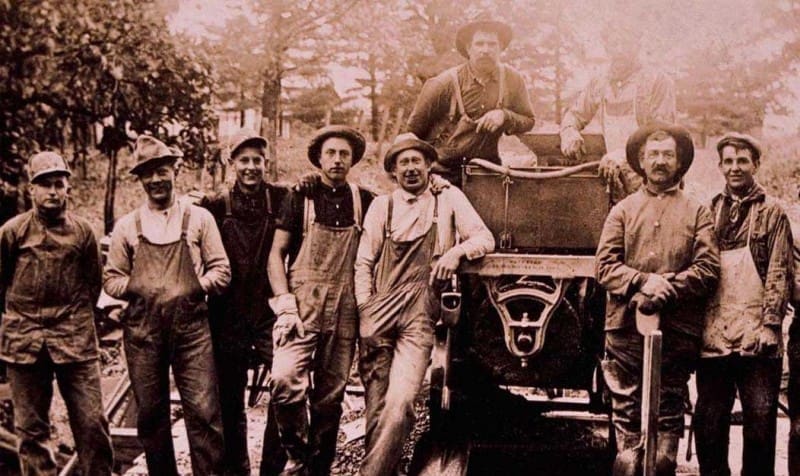Denim jeans have become an integral part of everyday life, so much so that most of us never stop to question where our favourite pair came from, how they were manufactured, nor their history.
Despite the range of innovative materials available, denim remains one of the most versatile, durable and highly sought after fabrics on the market. Jeans transcends gender, age, and class – with most people owning more pairs then there are days in the week. Their appeal will always be timeless but the design and the fabric technology involved will forever evolve with the times.
Now, new forms of ‘sustainable’ denim are emerging as manufacturers respond to the consumer demand for ecological fabrics as well as environmentally sound production processes.
While historians still debate the birth place of denim, the fabric was classified as a twill weave fabric using one coloured thread and one white one. A widely held view is that it was ‘born’ in Nîmes, France.
Serendipity played its part. During an unsuccessful replication attempt of a hard wearing cotton fabric known as ‘jeane’ (named after the city of Genoa, in Italy ) the fabric weavers of Nîmes realised they had developed a unique and sturdy fabric unlike anything else.
This fabric was made using a twill weave, with the weft passing under the warp threads. The weavers used indigo to dye the warp threads blue, but left the weft threads their natural white colour. This process gave the fabric a unique blue colour on one side, with white on the other. They called it Serge de Nîmes (translated to ‘twill of Nîmes’).
Synonymous with the classic image of the denim jean, indigo is among the oldest dyes to be used in textile dyeing and responsible for the iconic blue hue.
Formulated from an organic dye with a distinctive blue shade; indigo was originally manufactured and exported from India (where it was given its name) during the Greco-Roman era. A natural dye extracted from the leaves of certain plants, this process was important economically because blue dyes were once rare. Originally made from the plant called indigofera tinctoria, it became a highly prized commodity leading to Persian, Levantine, and Greek exporters imposing heavy tax duties. As such, this classic blue hue became a rare luxury in Europe.
It was only after the Portuguese explorer Vasco da Gama discovered a sea route to India in 1497, that indigofera tinctoria entered the markets of other colonies. Importers could now avoid the heavy duties imposed and consequently, the use of indigo in European clothing manufacture rose significantly
In 1865, the German chemist Adolf von Baeyer began working on the synthesis of natural indigo. He finally succeeded in doing this in 1883, paving the way for the first industrial mass production of synthetic indigo in 1897. Significantly cheaper to produce, synthetic indigo was also more reliable, due to the longer lasting colour which offered permanence and durability.
In the early 20th century, denim was adopted as the preferred workwear fabric choice for western cowboys, miners, farmers in the US. Not only was the fabric cheap, but denim was more durable and sturdy than the popular alternative – ‘jean’ (traditionally made from cotton, linen and wool). After Levi’s & Strauss patented the metal rivets to make them more hard-wearing, they began producing the iconic denim blue trousers that became a common feature among working men. The classic symbol of the American West is now a staple in wardrobes. Modern jeans began to appear in the 1920s, but sales were largely confined to the working people of the western United States, such as cowboys, lumberjacks, and railroad workers. It’s thought that Levi’s jeans were first introduced to the East during the dude ranch craze of the 1930s.
Dude ranches arose in response to the romanticisation of the American West that began to occur in the late 19th century. Today, tumbleweed, rodeos and Wyatt Earp are as much symbols of our Western ideal as the humble denim jean. In 1893, historian Frederick Jackson Turner stated that the United States frontier was demographically “closed” which in turn conjured feelings of nostalgia for bygone days. With the ruthless lifestyle of the Wild West now gone, this nostalgia could be explored without the risk of gunslingers and shoot-outs. It was an era when the Wild West could be commercialised and romanticised.
The Western adventures of famous figures were made available to paying guests from cities of the East, who were referred to as ‘dudes’.
Some guest ranch visitors expected a somewhat sanitised and more luxurious version of the “cowboy life”, while others were more tolerant of the authentic odours and timetable of a working ranch.
Another chapter unfolded during World War II, when blue jeans were declared an ‘essential’ commodity and were sold only to those engaged in defence or military work.
As we edge closer to a new decade, we ask ourselves ‘what the future of denim will look like?’ Mirroring the direction take by the fashion industry as a whole, brands are being steered by consumers’ concerns over whether or not their products are sustainable and the denim manufacturing market is responding to this.
While many premium brands have honoured sustainable practices for some years, the launch of denim ranges from rapidly growing fast fashion etailers and a strong performance from those pioneering premium brands is also helping the breadth of the denim industry to thrive.
Wrangler’s Icon collection is made from 20% recycled denim, while Jack & Jones relaunched its low-impact denim range last year. Meanwhile, Primark – the fast-fashion pin-up of the industry – has launched jeans made from 100% sustainable cotton.
So, it seems that the future of the classic indigo blue denim jean will be green in spirit but classic in form. Forever in blue jeans, indeed.

